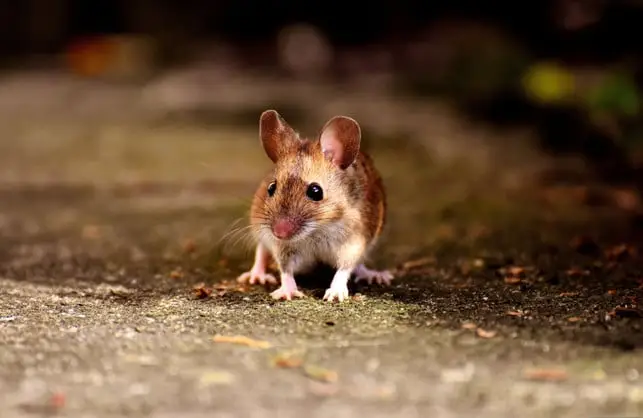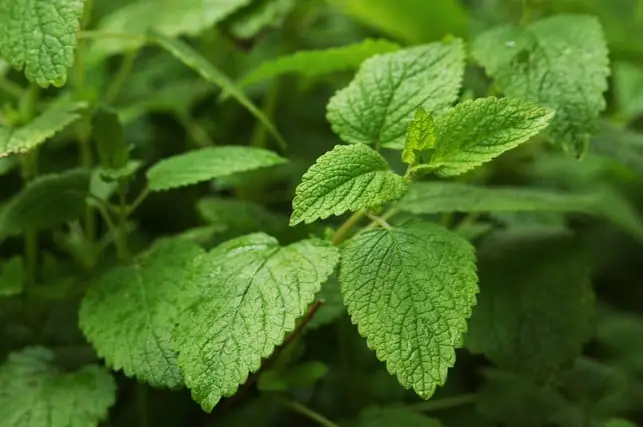While many people find mice cute and the term “mouse” is popular as a term of endearment, nobody wants these rodents in their own home. After all, they can cause plenty of trouble in houses, gardens, or sheds. This includes gnawed cushions and cables or nibbled roots in the vegetable patch. No wonder they quickly become considered pests. Moreover, mice can also transmit pathogens to humans. Fortunately, if you want to get rid of mice, you can do so in an animal-friendly way without causing suffering or using poison against the rodents.
1. Getting Rid of Mice – Sealing Entrances

Mice can get into your house through the tiniest holes and cracks. If you want to get rid of mice, you should first find out where the animals are entering. The most common entry points include:
small holes in the exterior wall of your house:
- Door gaps
- Supply lines
- Cable ducts
- Leaky windows and joints
- Open basement windows
If you discover a mouse in your home, you should first investigate how it got in. Check your home for vulnerabilities and plaster the walls. You can seal cracks with some plaster, silicone, or mortar.
Caution: Make absolutely sure that the rodents are no longer in the wall or ceiling when you seal the holes. If you accidentally lock them in, the animals will starve to death painfully.
2. Getting Rid of Mice: Prevention and Removing Food Sources
Mice come into your home because they find food there. Therefore, you should definitely reconsider how you handle food, supplies, and waste:
- Keep your home clean and dispose of garbage and waste immediately. Food remnants like bread crumbs attract rodents.
- Also make sure that you store your food properly, preferably in airtight containers. Mice quickly gnaw through packages of pasta, flour, or spices. You can find a selection at Otto or at the Avocadostore.
- Place garbage cans with food scraps as far away from the house as possible and make sure they are locked if possible.
- Your pet’s food also tastes good to mice. To drive mice away, you should therefore store it in sealed containers if possible. At Meintierdiscount, you’ll find food containers in various sizes. If you have a cat that you feed outdoors, for example, you should quickly remove any leftovers from its bowl and clean it.
- Do you have a rabbit or a hamster? Clean your animals’ cages regularly. Lack of cleanliness attracts mice and other rodents here as well.
- But bird feeders can also attract mice. Make sure that rodents cannot access the feeding stations. If seeds, oats, etc. land on the ground, you should try to collect them. One trick is to give birds several smaller portions throughout the day. This results in less falling to the ground.
- If you have fruit trees in your garden, you should not leave fallen fruit lying around. Mice like it too and are attracted to it.
If you have voles in your garden, you can repel them with buttermilk or certain plants.
3. Repelling Mice with Scents

The small rodents have extremely good noses that lead them to their food sources. However, there are also some scents that mice don’t like and that you can use to repel them:
- Peppermint oil doesn’t just help with a cold, you can also use it to repel rodents. Drip some oil on cloths and place them in the holes and on the paths that mice frequently use. You can buy peppermint oil at your drugstore, pharmacy, or online: For example, at Aponeo, BioNaturel, or Amazon
- Vinegar is particularly suitable as an anti-mouse remedy. Fill a cleaning bucket with hot water and add enough vinegar to the cleaning water so that you can clearly smell the sour odor. Then mop the floor of your entire home with the mixture. Don’t forget the hard-to-reach places under cabinets and beds. Finally, soak some cloth rags with pure vinegar and place them on the preferred routes of the mice and in front of the mouse holes.
Repelling mice with vinegar and peppermint oil is both environmentally friendly and humane. Don’t worry, the liquids do not harm the rodents. The strong scents simply ensure that the mice feel somewhat uncomfortable and can no longer take their preferred routes. This eventually leads to the mouse leaving your house. However, the effectiveness of these methods is not scientifically proven.
Caution: Do not use chili or cayenne powder – even though it’s often recommended online. Because the spicy seasonings can cause severe respiratory distress in mice, pest controllers advise against using them.
4. Cat Litter as Mouse Deterrent
Cats are probably the most natural defense against mice. Often just the mere smell of the feline friends is enough to repel rodents. As prey animals, mice prefer to stay away from cats’ territories.
You can use this behavior to your advantage. Fill a cloth bag with used cat litter and place it near the mice’s pathways and holes. The rodents will quickly flee to avoid being caught by a cat. Once you’ve driven the mice away, you should dispose of the cat litter.
5. Repelling Mice: Live Traps Instead of Snap Traps
If you want to be safe when catching mice, you can set up a live trap. The principle is simple: the mouse goes into the trap and you can release it outside again. Make sure that you release the mouse approximately 100 meters away from your house, preferably in a meadow or at the edge of a forest. This ensures that the mouse won’t find its way back to you quickly but will find enough food and shelter.
There are many different live traps that you can buy at any hardware store. A cost-effective alternative is the bucket trap, which is also suitable for the terrace or basement. You can even make it yourself:
- Take a cleaning bucket that is at least 25 centimeters high. The bucket must not be too low, as mice can jump up to 20 centimeters high. Place the bucket, with the opening facing up, so that it is near a mouse pathway or hole.
- Place a small bowl or saucer in the bucket.
- Now place a solid bait on the saucer, which could be a piece of bread or nuts, for example.
- Using old books or wooden blocks, you can now stack a small mouse staircase outside in front of the bucket. The distance between the steps should not be too large so that it’s as easy as possible for the mouse to climb the stairs.
- Place another small piece of bait on each individual step of the mouse staircase. This will lure the mouse up to the edge of the bucket. Ideally, the mouse will fall into the bucket at that point and be trapped.
- Then carefully place a towel over the bucket and take the mouse outdoors.
Important: The mouse should not be trapped in the bucket for too long. This causes stress and can lead to death in the worst case. Therefore, check your mouse live trap regularly.
Caution: Do not reach into the bucket with your hand to remove the mouse! The frightened animal can quickly bite you. Instead, take the bucket outside and place it on the ground with the opening facing away from you. Now the mouse can simply run out.
